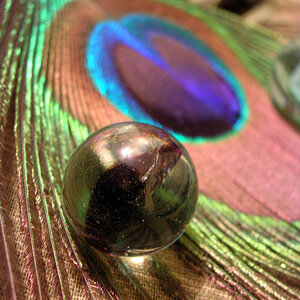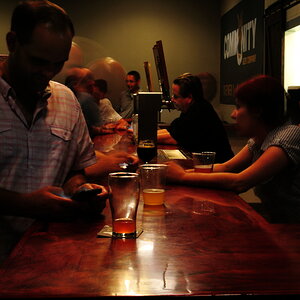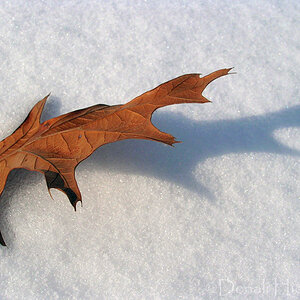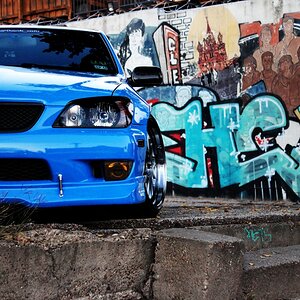shmne
No longer a newbie, moving up!
- Joined
- Jun 3, 2009
- Messages
- 641
- Reaction score
- 83
- Location
- Florida
- Can others edit my Photos
- Photos OK to edit
Ever since the term "HDR" was introduced to people it seems its actual meaning has been greatly confused by the masses. So I am going to attempt to make a post that clearly explains this concept, versus another concept called compositing.
The following is an article I've decided to write to clarify HDR, and compositing, and when to use each.
High Dynamic Range (HDR) - A technique in which the end goal is to allow the viewer to see a broader range of lights to darks without losing information due to clipping.
What this means: When taking a picture, mainly outdoors, it is sometimes impossible to collect all the light information in a scene. Sometimes, you can only gather soo much information before you have to start cropping either the highlights or shadows. So to avoid the loss of information you take multiple exposures, usually 3, so that later you can use the photo-manipulating software of choice to composite them into one congruent piece.
How it works: By having a more highlight values (or lights), and more shadow values (or darks) you have effectively increased the dynamic range of the image. Dynamic range is literally the ratio between these two values.
Your computer actually takes the separate images and combines them in a way to increase this ratio drastically, by using an algorithm. This algorithm is designed in a way such that more details are created in your lights, and in your darks. So now you have more information in your lights, darks, and even grays which in turn makes a more appealing shot because our eyes love information.
Compositing - (Taken from web definitions) is the combining of visual elements from separate sources into single images, often to create the illusion that all those elements are from one originally.
So you might be finding yourself asking a question right about now, something like;
"But say, Joe, if an HDR image is just combining multiple images to look like one, isn't HDR a form of compositing???"
And I would have to respond with yes, in fact HDR is compositing.
What this means: This means when you are taking a shot of your nifty shoes, and use HDR techniques, you are not creating an HDR. In fact your are simply adding saturation, contrast, a fake level of sharpening, and generally speaking an increase in the dynamic range of colors.
Bringing it all together now: Taking the steps to produce an "HDR" image when it does not require it, does not actually make the image HDR. This is because you are not increasing the dynamic range of light at all. At most you are increasing the dynamic range of colors, which could be done much simpler by duplicating the image and throwing it in overlay with photoshop.
All HDR is compositing, but not all compositing is called HDR. The sooner you can understand this, the sooner you can take advantage of using compositing techniques that do a better job then HDR does. HDR is a great tool, but like all tools it is important to use it at the right time. There are many techniques out there that do a better job making a photo look "pro"
I hope this clears some questions up, and more importantly I hope this makes you ask yourself the next time you are out shooting "Do I really need to make this HDR?"
P.S. - Sorry if anything is a bit off, it is currently 7:40 a.m. and I have been up all night. I have felt the need to write this up for some time now and I hope I did a decent enough job explaining the two concepts clearly. Any critiques are appreciated to make this more streamlined and understandable to people.
The following is an article I've decided to write to clarify HDR, and compositing, and when to use each.
High Dynamic Range (HDR) - A technique in which the end goal is to allow the viewer to see a broader range of lights to darks without losing information due to clipping.
What this means: When taking a picture, mainly outdoors, it is sometimes impossible to collect all the light information in a scene. Sometimes, you can only gather soo much information before you have to start cropping either the highlights or shadows. So to avoid the loss of information you take multiple exposures, usually 3, so that later you can use the photo-manipulating software of choice to composite them into one congruent piece.
How it works: By having a more highlight values (or lights), and more shadow values (or darks) you have effectively increased the dynamic range of the image. Dynamic range is literally the ratio between these two values.
Your computer actually takes the separate images and combines them in a way to increase this ratio drastically, by using an algorithm. This algorithm is designed in a way such that more details are created in your lights, and in your darks. So now you have more information in your lights, darks, and even grays which in turn makes a more appealing shot because our eyes love information.
Compositing - (Taken from web definitions) is the combining of visual elements from separate sources into single images, often to create the illusion that all those elements are from one originally.
So you might be finding yourself asking a question right about now, something like;
"But say, Joe, if an HDR image is just combining multiple images to look like one, isn't HDR a form of compositing???"
And I would have to respond with yes, in fact HDR is compositing.
What this means: This means when you are taking a shot of your nifty shoes, and use HDR techniques, you are not creating an HDR. In fact your are simply adding saturation, contrast, a fake level of sharpening, and generally speaking an increase in the dynamic range of colors.
Bringing it all together now: Taking the steps to produce an "HDR" image when it does not require it, does not actually make the image HDR. This is because you are not increasing the dynamic range of light at all. At most you are increasing the dynamic range of colors, which could be done much simpler by duplicating the image and throwing it in overlay with photoshop.
All HDR is compositing, but not all compositing is called HDR. The sooner you can understand this, the sooner you can take advantage of using compositing techniques that do a better job then HDR does. HDR is a great tool, but like all tools it is important to use it at the right time. There are many techniques out there that do a better job making a photo look "pro"
I hope this clears some questions up, and more importantly I hope this makes you ask yourself the next time you are out shooting "Do I really need to make this HDR?"
P.S. - Sorry if anything is a bit off, it is currently 7:40 a.m. and I have been up all night. I have felt the need to write this up for some time now and I hope I did a decent enough job explaining the two concepts clearly. Any critiques are appreciated to make this more streamlined and understandable to people.


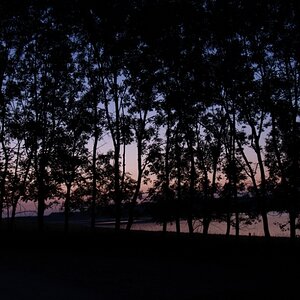

![[No title]](/data/xfmg/thumbnail/30/30865-3dc03385b0036f80524b0636d0d56f07.jpg?1619734484)
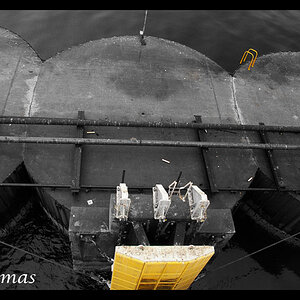
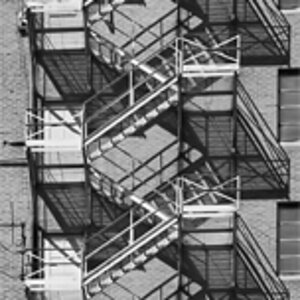
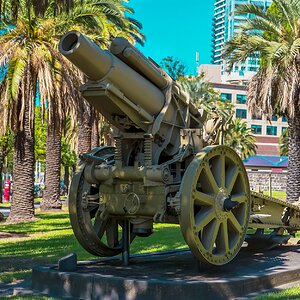
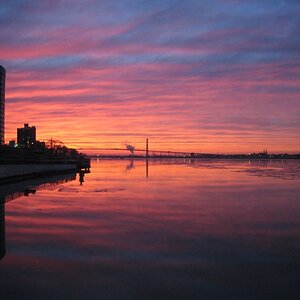
![[No title]](/data/xfmg/thumbnail/34/34350-d994760811e60909016e63fa23ff2e4d.jpg?1619736385)
